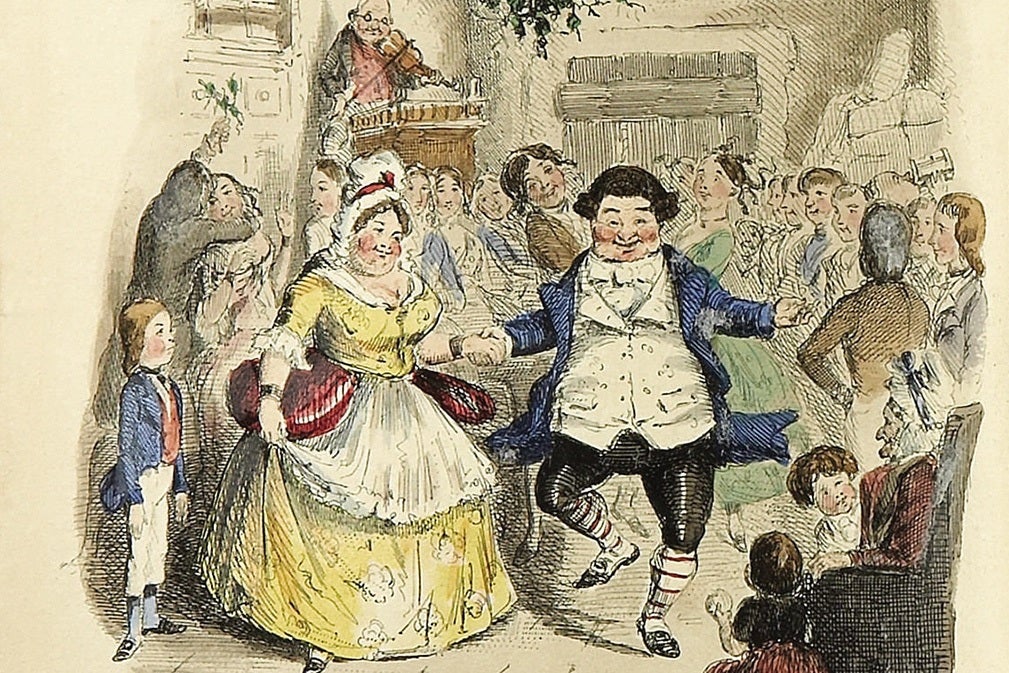How did a smaller religious celebration—once shunned by many American Christians—turn into a holiday season that is all about home, family, and Christmas dinner? It turns out that Charles Dickens has a lot to do with it.
In two histories tracing the roots of the American Christmas, scholars Cathy Kaufman and Patrick McGreevy focus on two integral parts of Christmas—the importance of food and the necessity of home.
As Kaufman argues, “Dickens’s Christmas Carol put a benign face on Christmas, focusing on a quaint and quiet Victorian family holiday, punctuated by small acts of voluntary charity.” In 1843, when Dickens first published A Christmas Carol, the Christmas he depicted was a shift away from the holiday of the early 1800s. To many at this time, Christmas celebrations had degenerated into raucous public parties and in America, they were also shunned by Puritans, Calvinists, Presbyterians, and Quakers.
Dickens’s A Christmas Carol changed this, and Kaufman notes that it served as “a roadmap for middle- and working-class pleasures at the precise moment when both meal structures and the nature of Christmas celebrations were changing.” Around the time of Dickens’ classic, American cookbook writers had just begun to suggest specific Christmas dinners and “demonstrate a serious interest” in the holiday.
Dickens’s story of Scrooge and the Cratchits transformed the American Christmas dinner. Kaufman outlines four crucial food scenes in the book, noting that distinct menu items from the Cratchit’s table later showed up in cookbooks as prescriptive Christmas dinners. In one cookbook from 1847, the base of each possible Christmas menu included “turkey, cranberries, and mincemeats or plum puddings,” evoking the Cratchits’ meal.
The importance of the private (decorated) home was also part of Charles Dickens’ influence. McGreevy notes that one of the great lessons readers take from Dickens’ classic work is that “Christmas could be a time to juxtapose the world as it is with what it should be.” This is a common undertone of Christmas decorations and celebrations. The interior and exterior of the house is transformed with lights, handicrafts, and a tree, while the body is nourished with decadent foods, gifted treats, and special food.
Weekly Newsletter
Of course, Christmas traditions have changed with shifting cultural preferences. But both Kaufman and McGreevy point out that some customs have remained constant, confirming that there are “occasional nods to unifying tradition” (Kaufman) and certain prevailing themes such as the home remaining integral to the holiday (McGreevy).
And yet the traditions continue to evolve. Kaufman concludes that “contemporary Americans think Christmas dinner very important: we simply cannot predict the menu.” Even this year’s December issue of Martha Stewart Living opens with Stewart saying, “I want my Christmas holiday to be the same, but different.” At the heart of Christmas celebrations are nods to tradition along with acceptance of change, just as Dickens once inspired.
Editor’s note: This piece has been amended to avoid asserting that turkey and cranberries was the Cratchits’ Christmas meal.







